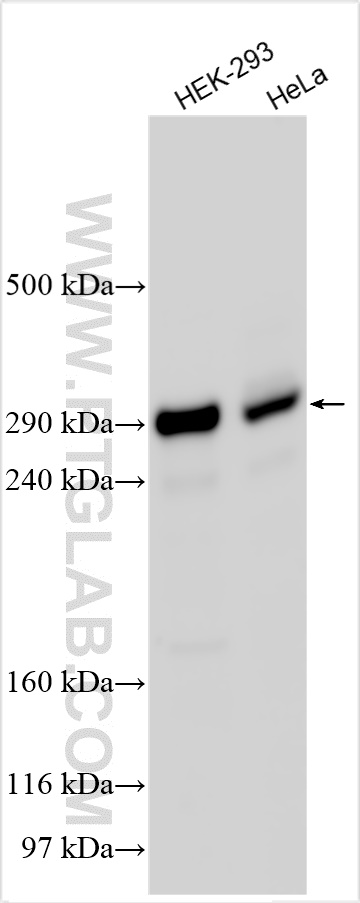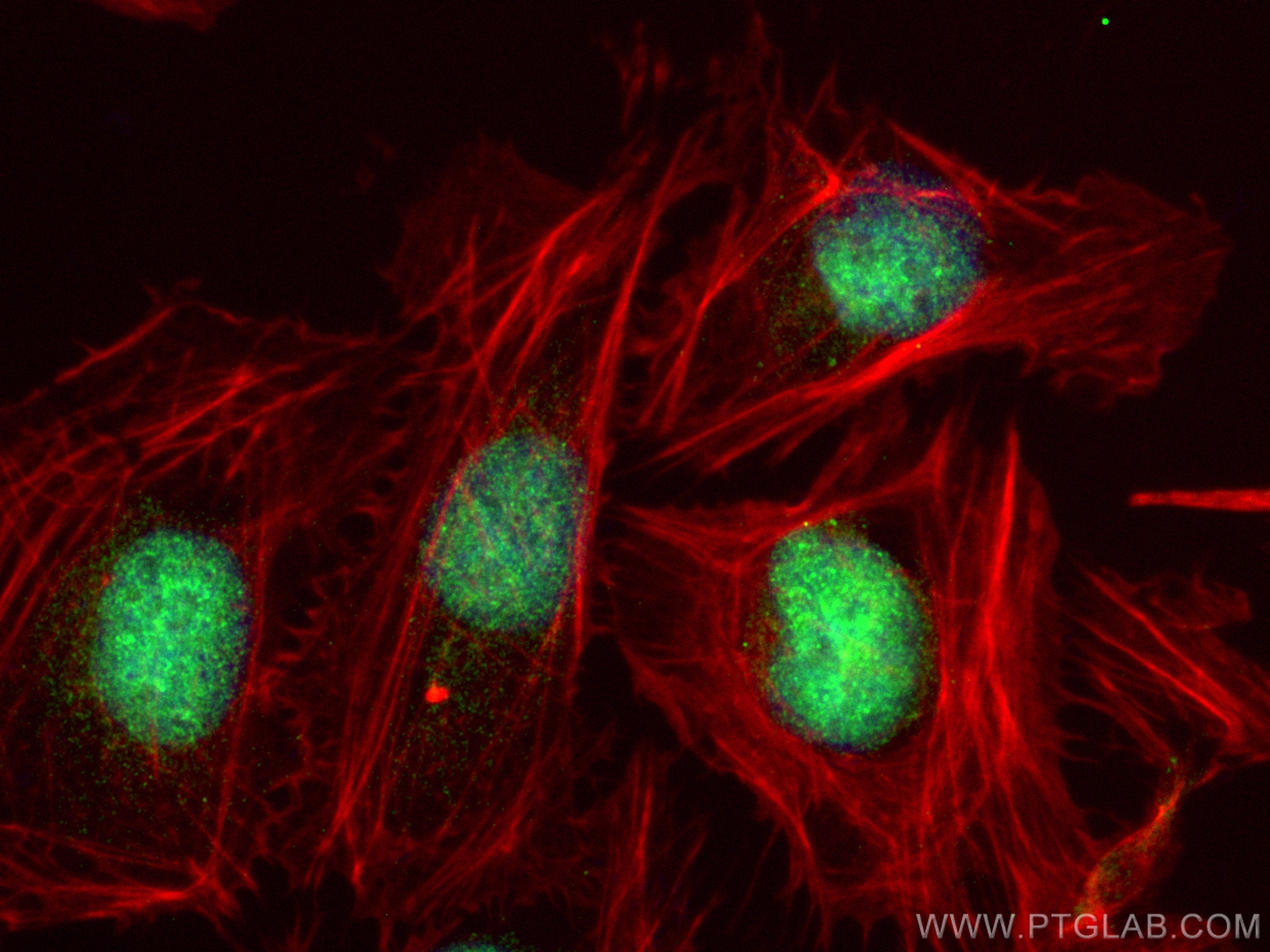验证数据展示
经过测试的应用
| Positive WB detected in | HEK-293 cells, HeLa cells |
| Positive IF/ICC detected in | U2OS cells |
推荐稀释比
| 应用 | 推荐稀释比 |
|---|---|
| Western Blot (WB) | WB : 1:1000-1:8000 |
| Immunofluorescence (IF)/ICC | IF/ICC : 1:50-1:500 |
| It is recommended that this reagent should be titrated in each testing system to obtain optimal results. | |
| Sample-dependent, Check data in validation data gallery. | |
产品信息
28695-1-AP targets KNL1 in WB, IF/ICC, ELISA applications and shows reactivity with human samples.
| 经测试应用 | WB, IF/ICC, ELISA Application Description |
| 经测试反应性 | human |
| 免疫原 | KNL1 fusion protein Ag29881 种属同源性预测 |
| 宿主/亚型 | Rabbit / IgG |
| 抗体类别 | Polyclonal |
| 产品类型 | Antibody |
| 全称 | cancer susceptibility candidate 5 |
| 别名 | CASC5, D40, CT29, Cancer/testis antigen 29, Blinkin |
| 计算分子量 | 265 kDa |
| 观测分子量 | 300 kDa |
| GenBank蛋白编号 | NM_170589 |
| 基因名称 | CASC5/KNL1 |
| Gene ID (NCBI) | 57082 |
| RRID | AB_3086079 |
| 偶联类型 | Unconjugated |
| 形式 | Liquid |
| 纯化方式 | Antigen affinity purification |
| UNIPROT ID | Q8NG31 |
| 储存缓冲液 | PBS with 0.02% sodium azide and 50% glycerol , pH 7.3 |
| 储存条件 | Store at -20°C. Stable for one year after shipment. Aliquoting is unnecessary for -20oC storage. |
背景介绍
KNL1 is a component of the multiprotein assembly that is required for creation of kinetochore-microtubule attachments and chromosome segregation. KNL1 functions as a scaffold for proteins that influence the spindle assembly checkpoint during the eukaryotic cell cycle and it interacts with at least five different kinetochore proteins and two checkpoint kinases. In adults, this gene is predominantly expressed in normal testes, various cancer cell lines and primary tumors from other tissues and is ubiquitously expressed in fetal tissues.
实验方案
| Product Specific Protocols | |
|---|---|
| WB protocol for KNL1 antibody 28695-1-AP | Download protocol |
| IF protocol for KNL1 antibody 28695-1-AP | Download protocol |
| Standard Protocols | |
|---|---|
| Click here to view our Standard Protocols |

